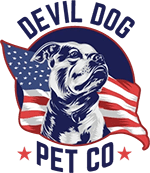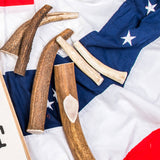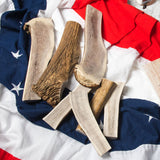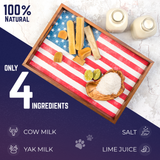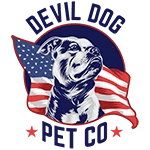Key Takeaways
- Choosing a turtle dog toy is a strategic way to enhance your leadership with your dog.
- Turtle dog toys help build your dog's focus and impulse control.
- These toys promote healthy chewing habits in dogs.
- The unique shape of turtle dog toys engages your dog's natural hunting instincts.
- Using turtle dog toys provides structured opportunities to reinforce commands and boundaries.
Table of Contents
- What Is a Turtle Dog Toy? Functions, Types, and Core Benefits
- Turtle Dog Toy Materials & Durability: What Sets the Best Apart
- How to Choose the Right Turtle Dog Toy for Your Dog
- Introducing and Using Turtle Dog Toys for Leadership, Enrichment, and Training
- Cleaning and Maintenance: Turtle Dog Toy Longevity & Hygiene
- Common Problems & Practical Solutions: Toy Destruction, Boredom, Safety
- Turtle Dog Toys vs. the Rest: Direct Comparison Guide
- Top-Rated and Recommended Turtle Dog Toys by Dog Type & Age
- Turtle Dog Toys in the Extreme Dog Leadership Playbook
- Lead the Pack with the Right Turtle Toy Choice
The Ultimate Guide to Turtle Dog Toys: Choosing, Using, and Leading Through Play
Smart dog owners know that every toy choice is a leadership decision. A turtle dog toy isn't just another plush distraction, it's a tactical tool for building focus, impulse control, and healthy chewing habits. These uniquely shaped toys tap into your dog's natural hunting instincts while giving you structured opportunities to reinforce commands and boundaries.
The right turtle toy becomes part of your leadership arsenal, turning random play into purposeful enrichment. Whether you're dealing with destructive chewing, need better training rewards, or want to channel your dog's energy productively, understanding turtle toy construction, materials, and application makes the difference between chaos and control.
For dogs who crave a satisfying chew, supplementing play with antler dog chews or bully sticks can help redirect destructive tendencies and support dental health alongside their favorite turtle toy.
What Is a Turtle Dog Toy? Functions, Types, and Core Benefits
A turtle dog toy mimics the natural shell-and-flipper design that triggers hunting and foraging instincts. Unlike standard plush toys, the turtle's dome-shaped shell provides ergonomic grip points while flippers create natural tug handles. This design forces dogs to engage multiple muscle groups and problem-solving skills during play.
| Toy Type | Key Features | Best For | Durability Level |
|---|---|---|---|
| Reinforced Plush Turtle | Double-stitched seams, secure squeakers | Moderate chewers, comfort seekers | Medium (3-6 months) |
| Rope Turtle Hybrid | Cotton-poly blend, dental floss action | Heavy chewers, tug enthusiasts | High (6-12 months) |
| Latex Rubber Turtle | Bounce, squeak, food-grade materials | Fetch players, teething puppies | Medium-High (4-8 months) |
| Interactive Turtle | Movement, sounds, treat dispensing | High-energy breeds, solo play | Medium (depends on electronics) |
The shell shape naturally encourages side-gnawing rather than straight-down chomping, reducing tooth damage risk. For leadership-focused owners, turtle toys excel as training rewards because their distinctive shape makes them easy to spot, retrieve, and control during sessions.
Turtle Dog Toy Materials & Durability: What Sets the Best Apart

Premium turtle toys use triple-layer construction with reinforced seam placement at stress points. The shell typically features double-wall fabric with internal mesh stabilization, while flippers get extra bartacking at attachment points. Quality manufacturers like Tuffy engineer their turtle toys to withstand over 80 tug sessions with moderate-strength dogs.
Material safety centers on non-toxic dyes meeting EN71 child safety standards and secure squeaker placement. The best latex turtle toys use natural rubber compounds that compress and return without cracking, while rope versions blend cotton and polyester for dental cleaning action without excessive fiber shedding.
Construction Reality Check: A well-built turtle toy should survive being stepped on without structural damage. The shell dome distributes pressure naturally, while cheap toys collapse and expose internal components immediately.
Inspect new toys for loose threads, weak attachment points, and squeaker security before first use. Quality turtle toys maintain their shape even when wet, while inferior versions become shapeless fabric bags that lose all enrichment value.
How to Choose the Right Turtle Dog Toy for Your Dog
Size selection trumps all other factors, choose a turtle dog toy that's larger than your dog's mouth opening to prevent swallowing attempts. Power chewers need reinforced construction with rope elements, while gentle mouths can enjoy standard plush versions with secure squeakers.
| Dog Profile | Recommended Style | Size Guidelines | Key Safety Notes |
|---|---|---|---|
| Teething Puppy (4-8 months) | Soft rubber or oversized plush | 2x mouth width minimum | Supervise for weak seams |
| Power Chewer (any age) | Rope hybrid or mega-reinforced | Longest available size | Avoid single-layer construction |
| Senior Dog (7+ years) | Latex with bounce, softer materials | Easy-grip size for arthritic jaws | Skip ultra-hard plastics |
| Multi-Dog Household | Extra-large reinforced turtle | Sized for biggest dog | Resource guarding prevention |
Observe your dog's play style before committing. Dogs who shake toys violently need reinforced attachment points, while gentle carriers can use standard construction. Always choose toys marketed specifically for your dog's intensity level, "durable" doesn't equal "indestructible."
For extreme chewers, select turtle toys with rope elements integrated into the shell design. These provide the satisfying texture destruction without compromising the toy's structural integrity, extending lifespan from days to months.
Introducing and Using Turtle Dog Toys for Leadership, Enrichment, and Training
Present the new turtle dog toy after exercise when your dog is calm but engaged. Hold the toy at chest level, allow investigation, then use a clear release command like "Take it!" This establishes you as the gatekeeper of enrichment, not a passive provider.
Transform turtle toys into training tools through structured games. Use the shell for "drop it" practice, the dome shape makes retrieval easy for you while the toy remains visible to your dog. Hide the turtle for scent work, building problem-solving skills while reinforcing recall commands when they find it.
Leadership Application: Dexter only receives his turtle toy after demonstrating calm "place" behavior. This turns the toy into an earned reward rather than background entertainment, building impulse control and respect for boundaries.
Limit initial sessions to 15 minutes to maintain novelty and prevent obsessive behavior. Rotate the turtle toy with other enrichment options, keeping it special rather than constantly available. This approach builds anticipation while preventing destructive fixation.
Cleaning and Maintenance: Turtle Dog Toy Longevity & Hygiene

Clean turtle toys weekly or after outdoor play using targeted methods based on construction. Plush versions get spot cleaning with warm water and firm-bristle brushes, while latex toys respond well to diluted white vinegar wipes followed by thorough rinsing.
| Material Type | Cleaning Method | Frequency | Drying Requirements |
|---|---|---|---|
| Reinforced Plush | Spot clean or gentle machine wash | Weekly | Air dry completely |
| Latex/Rubber | Hot soapy water wipe-down | After each use | Towel dry immediately |
| Rope Elements | Boiling water soak (5-10 minutes) | Bi-weekly | Full air dry, sun exposure |
| Interactive/Electronic | Damp cloth exterior only | As needed | Avoid moisture in battery compartments |
Sun-dry cleaned toys when possible, UV exposure naturally eliminates bacteria while preventing mildew development. Discard any turtle toy showing mold growth, persistent odors, or structural damage that creates sharp edges or loose parts.
Common Problems & Practical Solutions: Toy Destruction, Boredom, Safety
Rapid toy destruction signals mismatched durability levels or unsupervised obsessive chewing. Upgrade immediately to reinforced versions with rope cores, and implement structured play sessions rather than 24/7 access. Remove the toy when chewing becomes frantic rather than purposeful.
When dogs lose interest in their turtle dog toy, reintroduce it during high-engagement moments like post-walk energy. Create scent appeal by rubbing a small amount of safe treat paste on the shell, or incorporate the toy into hide-and-seek games to rebuild excitement.
Address exposed stuffing or squeakers immediately by removing the compromised toy. For skilled owners, emergency repairs using dental floss can extend toy life temporarily, but replacement remains the safest option. Choose stuffing-free alternatives for dogs who consistently breach toy walls.
Dogs attempting to eat toy pieces require immediate intervention with firm "No" commands followed by redirection to appropriate chews like elk antlers or extra large Himalayan dog chews. This satisfies the jaw exercise need while protecting digestive health.
Turtle Dog Toys vs. the Rest: Direct Comparison Guide
Turtle-shaped toys outperform standard plush options through superior grip points and reinforced construction. The shell dome provides secure carrying while flipper appendages enable controlled tugging, functionality absent in basic squeaky toys that offer only compression play.
| Feature | Turtle Dog Toy | Standard Plush | Rope Toys | Ball Toys |
|---|---|---|---|---|
| Durability Construction | Reinforced shell, triple-stitched seams | Single-layer fabric | Woven fibers only | Solid but limited texture |
| Play Modes Supported | Fetch, tug, chew, carry | Squeeze, light chew | Tug, dental flossing | Fetch, chase only |
| Training Applications | Drop-it, place, find-it games | Basic comfort object | Tug-of-war control | Recall training |
| Enrichment Value | Multi-textural, shape variety | Limited tactile options | Dental benefits | Exercise-focused |
Research indicates textured, multi-component toys maintain dog engagement 40% longer than single-material alternatives. The turtle's anatomical design taps into natural prey-drive behaviors while providing structured interaction points for owner-directed play.
Standard plush toys serve comfort needs but lack the tactical advantages turtle designs provide for building impulse control and structured play habits essential to Extreme Dog Leadership. For more enrichment ideas, explore this fire hose dog toy guide for tough chewers or see how a ring dog toy can add variety to your dog's play routine.
Top-Rated and Recommended Turtle Dog Toys by Dog Type & Age

For Power Chewers: Tuffy Mega Turtle Series
Best for: Dogs who destroy standard toys within hours
Seven-layer construction with protective webbing survives 80+ tug sessions. The 13-inch size prevents swallowing while rope-reinforced flippers withstand aggressive manipulation. Expect 4-6 months of active use with proper rotation.
For Teething Puppies: Soft Rubber Turtle Varieties
Best for: 8-16 week old puppies developing bite inhibition
Food-grade rubber construction flexes with developing teeth while maintaining shape integrity. Avoid versions with detachable parts or hard plastic elements that could damage emerging adult teeth.
For Senior Dogs: HuggleHounds Plubber Turtle
Best for: Dogs with dental sensitivity or arthritis
Soft latex material provides satisfying texture without excessive jaw strain. The lightweight design accommodates reduced grip strength while maintaining engaging squeaker functionality.
For Multi-Dog Homes: Oversized Rope-Core Turtles
Best for: Preventing resource guarding during group play
Large profile reduces competition intensity while durable construction survives multiple-dog interaction. Choose versions with multiple grip points to accommodate simultaneous play.
Turtle Dog Toys in the Extreme Dog Leadership Playbook
Every turtle dog toy interaction becomes a leadership opportunity when approached with intention. Rather than passive entertainment, these tools build structure through earned access, controlled play sessions, and purposeful training integration.
Leadership Principle: Enrichment is earned, not given freely. Dogs who demonstrate calm behavior and basic obedience earn turtle toy access, creating positive associations with impulse control and owner respect.
Implement turtle toys as tactical training aids for "place" commands, the visible, appealing toy motivates position-holding while teaching delayed gratification. Use shell-carrying exercises to build "gentle mouth" habits and improve drop-it reliability during high-value item training.
With Dexter, structured turtle toy sessions reduced furniture chewing by 75% within three weeks. The key: making interactive play more rewarding than destructive alternatives through consistent leadership and engaging variety.
Looking to strengthen your leadership toolkit beyond toys? Long lasting dog chews and premium Grade-A elk antler dog chews can provide additional enrichment and chewing satisfaction for dogs with high drive. For more on choosing safe toys, see this veterinary guide to safe dog toys.
Lead the Pack with the Right Turtle Toy Choice
Selecting the right turtle dog toy reflects your commitment to purposeful leadership rather than random entertainment. Quality construction, appropriate sizing, and strategic implementation transform simple play into character-building exercises that strengthen your bond while satisfying natural instincts.
Remember: the toy itself doesn't create results, your engagement, consistency, and vision for your dog's development drive success. Whether introducing a first turtle toy or upgrading from destroyed alternatives, approach each decision with the same tactical mindset you'd apply to training or nutrition choices. For additional tips on selecting toys and play activities, consult this AVMA resource on dog toys and play. You might also enjoy reading about the crab dog toy for another unique enrichment option.
Frequently Asked Questions
What are the key benefits of using a turtle dog toy for training and leadership?
Turtle dog toys build your dog's focus and impulse control by turning play into purposeful enrichment. They provide structured opportunities to reinforce commands and boundaries, helping you lead with clarity and consistency.
How do the unique design features of turtle dog toys engage a dog's natural instincts?
The turtle's shell-and-flipper shape taps into your dog's hunting and foraging instincts by encouraging problem-solving and multi-muscle engagement. Flippers act as natural tug handles, while the dome-shaped shell offers ergonomic grip points that challenge your dog mentally and physically.
What materials and construction qualities should I look for to ensure my turtle dog toy is durable?
Look for reinforced stitching, double-stitched seams, and durable fabrics like cotton-poly blends or reinforced plush. Toys designed for heavy chewers often feature dental floss action or hybrid rope elements to withstand strong jaws and extend playtime.
How can turtle dog toys help manage destructive chewing and promote healthy chewing habits in dogs?
Turtle dog toys redirect chewing energy toward safe, engaging outlets that satisfy natural urges. Combined with durable chews like antlers or bully sticks, they help reduce destructive behavior while supporting dental health and mental stimulation.
